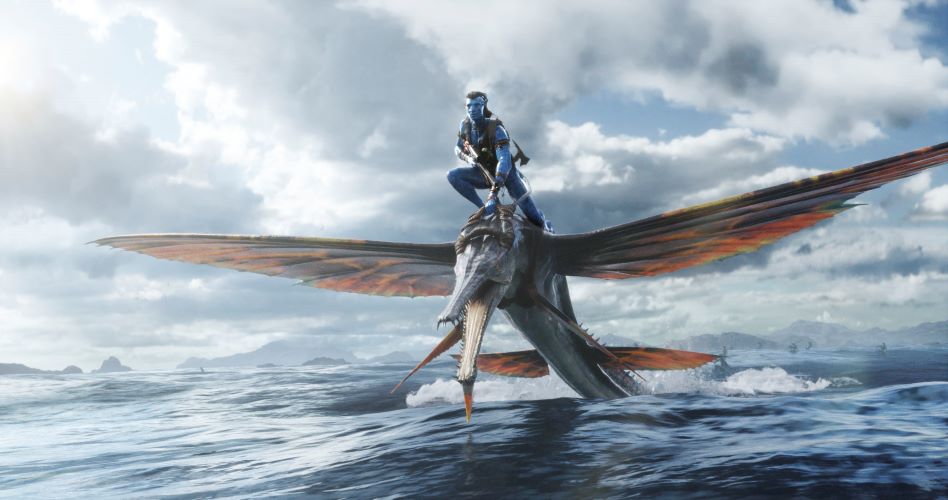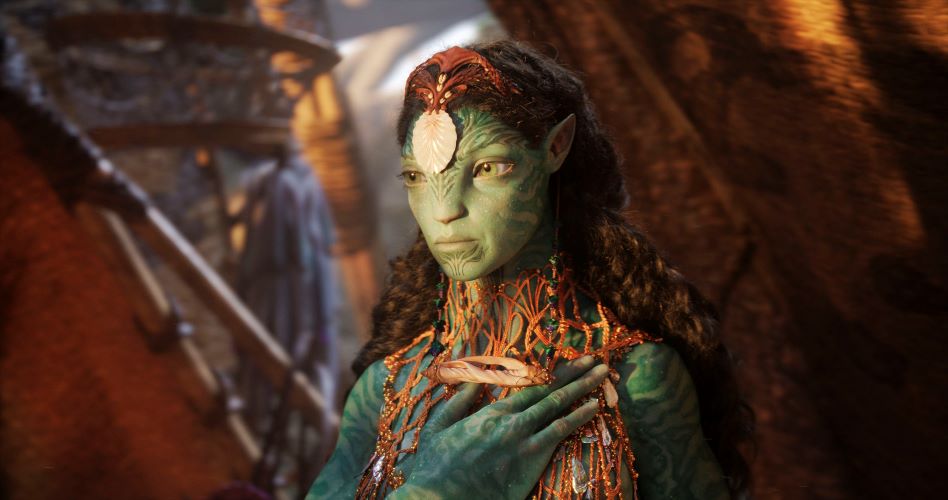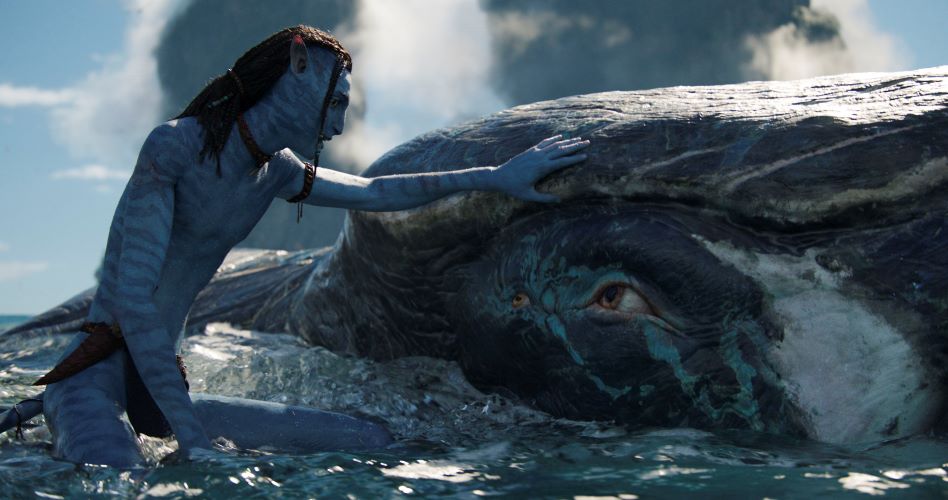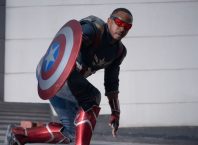
The art and technology of Avatar: The Way of Water are mesmerizing, James Cameron and his creative team take the viewer on a dazzling, fantastically detailed, visual trip. It’s an amazing cinematic experience that invites the viewer to let go of everything else – including the expectation of a dramatic narrative with intriguing plot and subtle characterization – and immerse in the wonder of its world.
In the long-awaited sequel, a long and leisurely exposition finds Jake Sully (Sam Worthington) living happily as a hybrid human-Na’vi on Pandora, with his Na’vi love Neytiri (Zoe Saldaña). They are raising a family of four, which includes the responsible eldest son Netyem (Jamie Flatters), the trying hard to equal his older brother and less obedient younger son Lo’ak (Britain Dalton) and the cute youngest daughter Tuk (Trinity Jo-Li Bliss). But their most intriguing child, Kiri (Sigourney Weaver), is adopted. The daughter of Dr. Grace Augustine, Kiri was born after her mother’s death, and the identity of her father is a mystery. The family structure is very traditionally mainstream, perhaps inevitably so. When Neytiri tells Jake, the former Marine turned Na’vi (I guess once a Marine, always a Marine), that he’s being too hard on the boys, he says “I’m their father, it’s my job.”
Kiri’s portrayal by Sigourney Weaver is a wonderful feat of performance capture, imbuing the character with Weaver’s warmth and tensile strength. Kiri’s mysterious background, sensitivity, empathy, and other qualities revealed in this film made me wish Cameron had chosen to follow her narrative arc rather than seduce the viewer with open-ended questions to be answered in the next film. It’s not tantalizing, it’s merely annoying, primarily because the narrative arc that the film does follow is all too familiar.
The peaceful ecosystem of Pandora is disrupted once more by the “sky people” (humans) who would destroy entire populations in the name of their own survival. Human technology has advanced, and they are now able to create Na’vi avatars for people who have died, and they install the memories of Quaritch (Stephen Lang) into an avatar, who is charged with hunting down Jake Sully.

Seeking to escape the sky people and not wanting to endanger their forest-dwelling clan, Jake and his family depart, seeking refuge with the sea dwellers, the Metkayina clan. As magical as Pandora’s forests are – those floating islands of green and rock are surreal bliss – the ocean scenes in this film are so brilliantly and imaginatively rendered that I could watch them for hours, even if there were no plot at all.
But there is a plot, and much of it is predictable – did Jake really think that he couldn’t be found among the Metkayina? There’s father-son motif that runs through the film via different characters, yet utterly lacks nuance or individuality. Themes of accepting difference and the meeting and clash of different cultures/species were more interesting to me, especially in the feisty character of Ronal (Kate Winslet) a leader of the Metkayina clan, and her interactions with the Sully crew, and the adventures of less-valued-son Lo’ak.

Did I find aspects of the narrative predictable, clichéd, and frustrating in its insistence on holding back the best story for the next Avatar film – oh, yes. Does that matter? Not so much. Ultimately, the story here matters less to me than the spectacle, and for much of the 3 hours and 12 minutes of Avatar: The Way of Water, I was entranced.
Avatar: The Way of Water
USA/2022/190 minutes
Director: James Cameron; Screenplay: James Cameron, Rick Jaffe, Amanda Silver; Cinematography: Russell Carpenter; Editors: David Brenner, James Cameron, John Refoua, Stephen E. Rivkin; Music: Simon Franglen; Cast: Sam Worthington, Zoe Saldaña; Stephen Lang, Britain Dalton, Giovanni Ribsi, Kate Winslet, Edie Falco, Sigourney Weaver, Jack Champion





